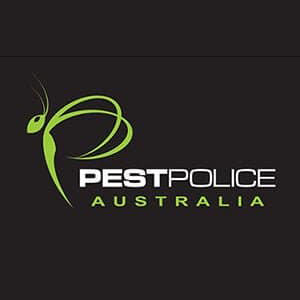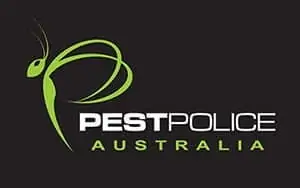It’s never easy facing the reality that your building hides uninvited guests who love dining on your structural timbers. More difficult than this is the fact that you’ll have to find a company who performs professional termite inspection.
How is that challenging, you ask? That’s because you don’t know if they’re going to do a thorough job of checking every nook and cranny for these destructive pests. The last thing you want to happen is to find out that you paid a group of guys handsomely only to realise that they haven’t done a comprehensive job at all!
If you don’t want to become a victim of such mediocrity, you need to know how termite inspections are done and how they are performed properly.
The Basics of Professional Termite Inspection
At its core, this kind of property inspection is a visual examination of a building where the inspectors look for evidence of termite damage and activity. The areas they typically check includes fence, wall edges, decks, steps, retaining walls, slab edge, stumps, or any feature with direct contact with the ground.
To confirm the presence of termites, Australian Standards require inspectors to perform an inspection that is non-invasive. This is why exterminators use microwave or camera technology to determine the extent of an ongoing infestation as well as what species are the perpetrators.
The Termite Inspection Process
The whole inspection process comes in phases and we’ll look at the standard ones in a typical termite inspection.
Inspecting the Perimeters
Any thorough inspection has to start with the outside walls before going into the interiors. This way, any point of entry from the exterior spaces can be detected. It’s around these areas where you find small termite tubes called mud tunnels or trails, which are proof that white ants have infiltrated a crack in the brickwork or through a weep hole (in the exterior wall, typically).
In cases where timber pest inspectors suspect a room to harbour termites but can’t find any solid evidence indoors, this will prompt them to check for external points of entry instead.
Inspecting the Property Interior
When there’s little termite activity to be found outside a particular property, timber pest inspectors then turn their focus on the internal spaces. For one, it’s the only way to gauge the level of moisture in suspected rooms. In addition, it minimises confusion between water leaks and termite activity. On that note, it’s really crucial that property owners report any recent leaks in their vanities, bathrooms, or kitchen so the inspectors can zero in on where the termite colony may be hiding.
Once inside, the inspector taps skirting boards, window frames, and door frames with a donger (tapping tool). What this instrument does is tell if a piece of wood has become hollow from being fed on by these pests because a damaged wood will give off an odd tone when hit by a donger. It’s worth noting that termites devour wood but typically leave the external paint, which results in a hollowed wooden piece.
Pest inspectors also use a moisture meter tool indoors because moisture is a good indicator of termite presence. That’s primarily because termites excrete something that looks like mud after eating wood and this affects the level of humidity in a particular area. In cases we find termite damage but the scanners don’t show evidence of moisture, it can be assumed that a particular space may already have undergone a previous infestation.
These aren’t the only ways we inspect the indoor spaces, however. It is a fact that a good percentage of Australian homes have in-fill slab between the wall and the floor and that’s why this space is inspected for termite invasion. That’s because these wood-eating menaces may enter the home either between the internal slab and brickwork (or even underneath). During this part of the inspection, inspectors may use microwave sensors or thermal imaging cameras that track movements within the wall. Any sign of movement may confirm the presence of an ongoing infestation within the suspected area. Otherwise, the inspectors move on to other areas looking for abnormal readings on their instruments.
Apart from the floors and walls, termite inspectors also have to take a look at other accessible areas, including the roof frames, trusses, and top plates. This is in compliance with Standards Australia and be doubly sure that there aren’t infestations in the roof void.
Upon Discovering Termite Activity
Once the suspicion of termite infestation has been confirmed, there are courses of actions at the disposal of the property owner or home buyer.
With the aid of the subsequent pest inspection report, you can pursue the wording of the special condition in the Offer and Acceptance (O&A) form if you’re a house buyer. You can work with the seller to resolve the issue at hand before you can proceed with purchasing the property. That or it can become the basis why you’d terminate the contract altogether.
If you own the place already, timber pest inspectors may recommend to do a variety of termite treatments and preventative solutions straight away. The sooner you can get rid of present infestation, the better it will be for your peace of mind and the property’s overall safety. This is another reason it makes sense to engage a capable pest inspection company while the infestation problem can still be remedied.
Preparing for a Thorough Termite Inspection
Contrary to popular belief, how thorough the inspection will be doesn’t just depend on the expertise of the pest inspector alone. In reality, property owners can contribute to its success by way of preparing the place to be inspected.
- Trim trees and bushes.
Start your preparation by giving bushes and trees around the home a good trim. Remember, termites feed on wooden items and if there aren’t any inside the home, they’ll likely chew on wood sitting nearby. By pruning trees and bushes before the termite inspection, you can give the inspector a chance to take a good look at these potential hiding spots.
- Clear up the rooms.
Once pest inspectors are done looking for clues outdoors, they check indoors for internal damage and termite trails. Because they need to look for chips through the woodwork and signs of termite damage, ask the property seller to remove any clutter in the home. This means moving furniture that may block the perimeter (e.g. moving cabinets off the wall and furniture pieces toward the centre of the room) and generally just giving him or her plenty of access to thoroughly check the interior walls. The walls aren’t the only parts to look for hints of termite activity, though. As much as possible, give them good access to crawl spaces, attics, storage rooms, or any places with less foot traffic. These nooks may be hiding a wood-eating menace.
- Remove items stored in critical areas.
Where there’s moisture, there is a good chance that termites could be thriving somewhere. With that, it’s a good idea to remove items stored around pipes, under the sink, and inside kitchen countertops and bathrooms. Of course, if you’re a home buyer, you’ll have to ask the vendor or real estate agent to do so for you. Getting these places cleared helps inspectors zero in on termite clues faster and more accurately.
- Brief household members.
If there are people living in the house you’re getting inspected for termites, it is best to inform them about the upcoming visit. Having people around during the inspection can potentially limit the termite inspector’s job so you want the entire household to listen to his or her instructions. And if there are pets, it may be best to put them in kernels or have someone walk them while the inspection is going on. With everyone on the same page, it’ll ensure the check goes as smoothly and quickly as possible.
The more you get the house prepared for the pest inspection, the quicker the pest control team gets the job done. By giving them full access to the entire place, you can be sure the subsequent report is as thorough and comprehensive as you expect it to be.
Call Us for Professional Termite Inspection and Pest Control
In the end, it’s worth noting that a thorough termite inspection gets the ball rolling toward dealing with termite infestation. It isn’t limited to detection and assessment, however. A competent pest control company will seek to contain any ongoing infestation with the appropriate treatments and preventative measures to give property owners and investors much-needed relief. After all, living with these destructive pests can render any place uninhabitable in due time.
When you suspect that white ants are destroying your property from within or wish to ascertain that they’re not around to wreak havoc in a potential investment, you’ll need a professional team to perform a thorough termite inspection as well as effective (and safe) pest control procedures. Luckily, you need not look any further since our experienced team covers for both bases. All you need to do is call and we’ll help you stop such a pest infestation dead in its tracks.

